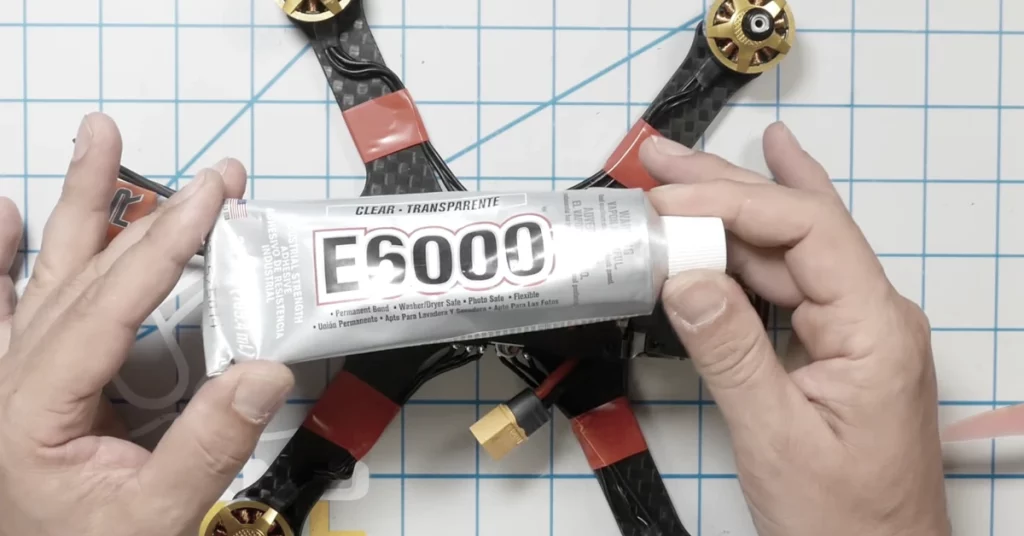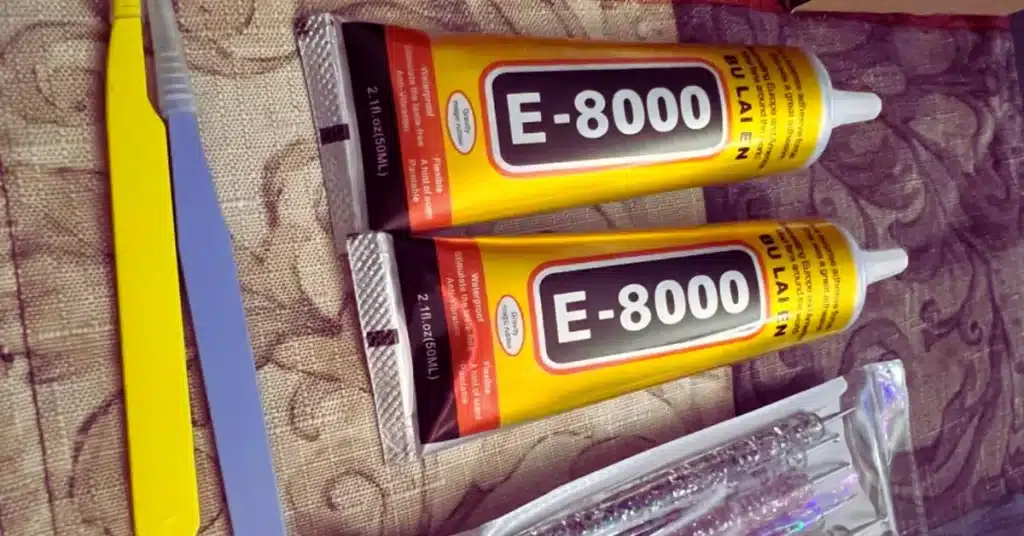Whether you’re a seasoned DIYer or simply looking to make a quick repair at home, deciding between e6000 vs. e8000 Glue can be daunting.
In this comprehensive guide, we’re putting these two adhesives head-to-head, examining their properties, uses, and customer feedback.
Read More: B7000 Vs. T7000 Vs. E8000
e6000 vs. e8000 Glue
Understanding Adhesives: A Brief Overview
Before we dive into the specifics of the e6000 vs. e8000 glue debate, it’s crucial to recognize the role adhesives play in our lives. From minor household repairs to creating DIY masterpieces, the adhesive you select is often the unsung hero, providing the necessary bond to keep things together.
Deep Dive into e6000 Glue
What Makes e6000 a Household Name
Renowned for its strength and flexibility, e6000 Glue has been a trusted choice for years. It’s a one-part epoxy adhesive, requiring no mixing before use.
The versatility of e6000 extends to a broad range of materials, including metal, fabric, glass, and ceramics.
Read More: GS Hypo Cement vs. E6000
Strengths and Weaknesses of e6000 Glue
While e6000 shines in its post-curing flexibility, enabling it to endure shocks without cracking, it does have its drawbacks.
The adhesive requires a lengthy curing time, ranging from 24 to 72 hours, which could be less than ideal for those needing immediate results.

e8000 Glue: The New Kid on the Block
The Appeal of e8000 Glue
In contrast, e8000 Glue is a relative newcomer to the adhesive market but has quickly gained a following. Like e6000, e8000 is also a one-part epoxy adhesive. However, it boasts a significantly quicker drying time, taking about 24 to 72 hours to cure fully.
Strengths and Weaknesses of e8000 Glue
While the rapid drying time of e8000 glue is a significant selling point, it does have its compromises.
Unlike the e6000, the e8000 becomes more rigid after curing, making it susceptible to cracking under heavy stress or impact.
Read More: E6000 Vs. E7000
What Are The Differences Between e6000 And e8000 Glue?
To better visualize the differences and similarities between e6000 and e8000 glue, let’s examine a side-by-side comparison:
| E6000 Glue | E8000 Glue | |
| Application | Versatile for various materials. | Ideal for electronics bonding. |
| Strength | Strong and durable bond. | Exceptionally strong bond. |
| Flexibility | Good flexibility for some movement. | Excellent flexibility for vibrations. |
| Waterproof | Resistant to water and moisture. | Highly waterproof. |
| Temperature Resistance | -40°F to 180°F (-40°C to 82°C). | -40°F to 250°F (-40°C to 121°C). |
| Curing Time | 24 to 72 hours. | 24 to 48 hours. |
| Chemical Resistance | Good resistance to common chemicals. | Excellent resistance to chemicals. |
| Odor | Strong odor during application. | Mild odor during application. |
| Clear | Dries clear for transparent materials. | Dries clear for transparency. |
| Size Options | Available in various sizes. | Available in various sizes. |
How to Use e6000 and e8000 Glue?
Whether you opt for e6000 or e8000 Glue, both adhesives necessitate clean surfaces for optimal adhesion. And always remember to let the glue cure for the recommended time before testing the bond strength.
Safety Considerations: e6000 and e8000 Glue
Being Safe with e6000 Glue
When using e6000 glue, safety measures should be in place. Ensure you are well-ventilated and avoid direct contact with your skin and eyes. It is also advisable to wear protective gloves during application.
Dealing with e8000 Glue Safely
Much like e6000, e8000 glue also requires safe handling. Its rapid curing property can make it more difficult to remove from the skin, so avoiding direct skin contact is crucial. Using gloves and operating in a well-ventilated space remains the standard safety protocol.

Cost and Availability
Both e6000 and e8000 glues are readily accessible online or at physical retail outlets.
While prices fluctuate based on the tube size and quantity in a pack, generally, the e8000 tends to be slightly cheaper than its e6000 counterpart.
Customer Reviews and Feedback
Customer reviews provide a valuable perspective on how these products perform daily.
Most importantly, both e6000 and e8000 glues have garnered positive feedback. e6000 users praise the product for its robustness and durability, while e8000 users often highlight its swift drying time.
Last Opinion
So, who emerges as the victor in the e6000 vs. e8000 glue face-off? In truth, it all comes down to your specific requirements.
If you need a highly flexible adhesive and can wait for it to cure, e6000 is a clear choice.
But if time is of the essence, e8000’s rapid drying time makes it a strong contender.
Both products offer reliable adhesion solutions and will likely live up to their promises, provided you adhere to the usage instructions and safety guidelines.

